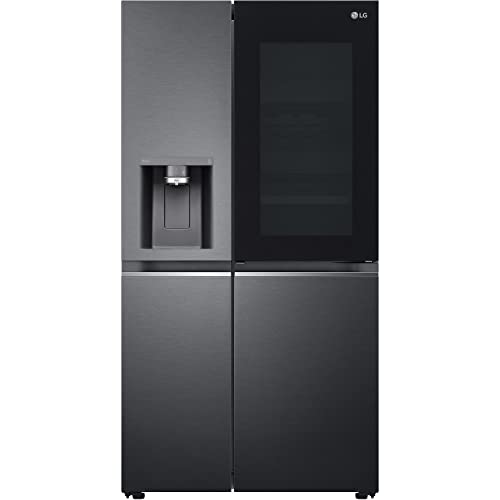Don't Buy Into These “Trends” About Fridges
The Ultimate Guide to Buying a Fridge: Making Smart Choices for Your Kitchen
When it pertains to necessary cooking area appliances, few items are as vital as a refrigerator. It is the heart of the cooking area— keeping your food fresh and your active ingredients at optimal temperature levels. However, picking the ideal fridge can be an overwhelming task, provided the range of styles, sizes, and technologies offered on the marketplace. This guide will supply valuable insights into the elements to consider when buying a fridge, typical types, and regularly asked questions to help you make a notified choice.
Secret Factors to Consider When Buying a Fridge
To simplify your decision-making process, here are the core factors one should consider when seeking to buy a fridge:
1. Size
- Cooking area Space: Measure the space in your kitchen where the fridge will be placed. This includes inspecting entrances to make sure the fridge can be delivered without issue.
- Capability: Consider how much food you normally store. A bigger household might need a fridge with a capability of 20-26 cubic feet, while smaller sized families may find 10-18 cubic feet enough.
2. Design
- Leading Freezer Refrigerators: A standard option that includes a freezer on top. They are typically more budget-friendly and energy-efficient.
- Bottom Freezer Refrigerators: Offers convenience by putting the refrigerator section at eye level. Suitable for those who access fresh food regularly.
- Side-by-Side Refrigerators: Provides simple access to both freezer and fresh food areas. Buy A Fridge Online for narrow cooking areas.
- French Door Refrigerators: Combines the advantages of bottom freezers with side-by-side layouts. They typically come with additional functions such as ice and water dispensers.
- Compact Refrigerators: Perfect for little spaces like dormitory or workplaces.
3. Energy Efficiency
- Look for energy-efficient designs to minimize electrical power costs. Check the Energy Star label, which suggests that the device meets or surpasses energy effectiveness requirements.
- Consider the typical yearly energy consumption reported in kilowatt-hours (kWh).
4. Functions
- Ice and Water Dispenser: Convenient for instantaneous access to ice and filtered water.
- Smart Technology: Some fridges come geared up with Wi-Fi connectivity that enables you to keep track of and adjust settings from your smart device.
- Adjustable Shelves and Bins: For adjustable storage to accommodate high items.
- Temperature Level Control Zones: Different areas might have various environment controls for optimal storage of various foods.
5. Cost
- Set a budget plan. Fridge prices can range from a few hundred to numerous thousand dollars depending on design, size, and features.
- Consider extra costs such as prolonged guarantees, shipment, and setup.
Relative Table of Popular Fridge Styles
Fridge Style
Typical Price Range
Pros
Cons
Top Freezer
₤ 400 – ₤ 1,200
Affordable, energy-efficient
Limited functions
Bottom Freezer
₤ 900 – ₤ 2,500
Easy access to fresh food
Can be costly
Side-by-Side
₤ 600 – ₤ 3,000
Great organization, easy access
Freezer space can be limited
French Door
₤ 1,200 – ₤ 4,000
Large, stylish, often feature-rich
Higher price point
Compact
₤ 150 – ₤ 600
Space-saving, portable
Restricted storage capability
Often Asked Questions (FAQs)
1. For how long do refrigerators normally last?
Usually, a properly maintained refrigerator can last around 10 to 20 years. Routine upkeep, such as cleaning up the coils and inspecting door seals, can extend its life expectancy.
2. How can I maintain my fridge efficiently?
- Keep the coils tidy to assist keep energy performance.
- Make sure that the door seals are tight to avoid cold air from getting away.
- Regularly thaw (if suitable) and clean the interior to avoid build-up of germs and smells.
3. Do I require to spend for shipment and setup?
A lot of sellers charge for shipment and setup, but this charge can often be waived during promotions. Always validate the charges before finishing your purchase.
4. What should I do if my fridge is not cooling correctly?
Start by inspecting the temperature level settings and ensure the vents are clear of any blockages. If the problem persists, it might be essential to seek advice from an expert repair work service.
5. How can I determine the size of the fridge I require?
As a basic guideline, permit about 4 to 6 cubic feet of space per person in your household. However, this can vary based upon private cooking and storage habits.
Buying a refrigerator might appear basic, but it needs careful consideration of numerous aspects. By examining your needs and preferences in regards to size, design, functions, and energy effectiveness, you're much better positioned to pick a fridge that will serve your home well for years to come. This guide intends to simplify the complexities included in fridge shopping, empowering you to make a notified decision that will enhance your cooking area experience. Whether you're updating or buying your very first unit, a little research can lead to a refrigerator that perfectly fits your lifestyle and culinary practices.
